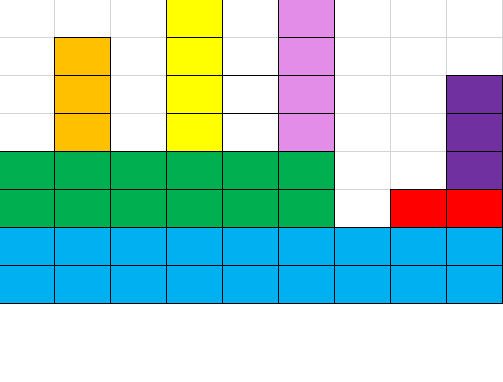前言
在上一篇随笔中,我们探讨了如何实现一套自定义通信协议,其中涉及到的粘包和拆包处理最初是完全自定义实现的,后来则改为了继承 ByteToMessageDecoder 来简化处理。
本篇将重点讨论这两种实现方式在缓存管理上的主要区别,并深入分析其中的不同之处以及值得借鉴的经验和技巧。
代码回顾
1)完全自定义实现
无缓存的情况
- 反复从ByteBuf中提取完整的消息
- 剩余的残缺消息写入缓存(会进行数据拷贝)
有缓存的情况
- 将新收到的数据接入缓存
- 反复从缓存中提取完整消息
- 释放缓存内读取过的数据(会进行数据移动,导致拷贝)
public class EchoServerHandler extends ChannelInboundHandlerAdapter {private static final int HEADER_LENGTH = 4; //消息头部长度private ByteBuf buffer = Unpooled.buffer(1024); //缓存残缺消息 @Overridepublic void channelRead(ChannelHandlerContext ctx, Object msg) throws Exception {ByteBuf income = (ByteBuf) msg;//上一次有缓存存在,则本数据包不是消息头开头,if(buffer.readableBytes() > 0) {//进行必要的扩容,下面的readBytes不会自动扩容 buffer.ensureWritable(income.readableBytes()); income.readBytes(buffer, income.readableBytes());readMsgFromBuffer(buffer);//剩下一点残缺消息if(buffer.readableBytes() > 0) {//保留剩下的数据,重置读索引为0System.out.println("缓存剩余字节:"+buffer.readableBytes());buffer.discardReadBytes();} else { //刚刚好,则清空数据 buffer.clear();}} else {readMsgFromBuffer(income);//剩下的数据全部写入缓存if (income.readableBytes() >0) {System.out.println("剩余字节:"+income.readableBytes());income.readBytes(buffer, income.readableBytes());}}}//从字节数组中读取完整的消息private void readMsgFromBuffer(ByteBuf byteBuf) {//剩余可读消息是否包含一个消息头while(byteBuf.readableBytes() >= HEADER_LENGTH) {byteBuf.markReaderIndex(); //由于可能读不到完整的消息,所以读之前先标记索引位置,方便重置//读取消息头byte[] headerBytes = new byte[4];byteBuf.readBytes(headerBytes);//获取类型int type = headerBytes[0] & 0xFF;//获取消息体长度int bodyLength = ((headerBytes[1] & 0xFF) << 16) |((headerBytes[2] & 0xFF) << 8) |(headerBytes[3] & 0xFF);//不包含请求体if (byteBuf.readableBytes() < bodyLength) {byteBuf.resetReaderIndex(); //重置读索引到当前消息头位置break;}// 完整消息体已经接收,处理消息byte[] body = new byte[bodyLength];byteBuf.readBytes(body);//System.out.println("type:"+type+"||length:"+bodyLength+"||body:"+new String(body, CharsetUtil.UTF_8));if(type == 1) {try {HelloRequest request = HelloRequest.parseFrom(body);System.out.println("收到消息:"+request.toString());} catch (Exception e) {System.out.println("解析失败:"+new String(body, CharsetUtil.UTF_8));}} else {System.out.println("消息类型未知:"+type);}}}.... }
2)继承ByteToMessageDecoder的实现
使用ByteToMessageDecoder后,数据的解码变得更加简化。只需检查缓冲区是否有足够的数据来提取一个/多个完整的消息。
如果数据不足,解码过程就会结束,无需额外管理缓存。
public class MessageDecoder extends ByteToMessageDecoder {private static final int HEADER_LENGTH = 4; //消息头部长度 @Overrideprotected void decode(ChannelHandlerContext ctx, ByteBuf in, List<Object> out) throws Exception {// 检查是否足够的字节来读取一个消息头while (in.readableBytes() >= HEADER_LENGTH) {in.markReaderIndex(); // 标记当前读取位置,便于重置// 读取消息头部byte[] headerBytes = new byte[4];in.readBytes(headerBytes);// 获取类型int type = headerBytes[0] & 0xFF;// 获取消息体长度int bodyLength = ((headerBytes[1] & 0xFF) << 16) |((headerBytes[2] & 0xFF) << 8) |(headerBytes[3] & 0xFF);// 检查缓冲区中的数据是否足够读取整个消息体if (in.readableBytes() < bodyLength) {in.resetReaderIndex(); // 重置读指针,等待更多数据break;}// 读取消息体byte[] body = new byte[bodyLength];in.readBytes(body);// 处理消息try {Object msg = null;if(type == 1) {msg = HelloRequest.parseFrom(body);} else if(type == 2) {msg = HelloResponse.parseFrom(body);} else {System.out.println("未知消息:"+new String(body, CharsetUtil.UTF_8));}if(Objects.nonNull(msg)) {out.add(msg);}} catch (Exception e) {System.out.println("解析失败: " + new String(body, CharsetUtil.UTF_8));}}} }
ByteToMessageDecoder源码
核心属性
//缓存private ByteBuf cumulation;//累加器(用于拼接缓存和新到数据)private Cumulator cumulator = MERGE_CUMULATOR;//X次channelRead之后,释放已读数据private int discardAfterReads = 16;//累计channelRead次数(每次释放完会重置)private int numReads;
处理流程
1.新到数据存放到缓冲区(使用累加器Cumulator进行数据合并)
2.循环调用子类的decode方法,读取消息存入List,直到数据不足
3.遍历List,依次传递给下一个处理器
累加器
提供2种累加器实现,MERGE_CUMULATOR和COMPOSITE_CUMULATOR
1)MERGE_CUMULATOR(默认实现)
缓存存在的时候,直接进行数据拷贝,与缓存数据进行整合。
下面的代码可以看到,如果缓冲区空间不够,则会进行扩容操作。
跟自定义实现中的"buffer.ensureWritable(income.readableBytes())"一致。
整体思路跟自定义实现差不多,不过它多考虑了两种情况
- 数据被共享:共享数据会被其他使用者影响,需排除影响
- 数据只读:只读空间无法被写入,而缓冲区是需要写入新数据的
public static final Cumulator MERGE_CUMULATOR = new Cumulator() {//cumulation是上一次的缓存,in是新到的数据 @Overridepublic ByteBuf cumulate(ByteBufAllocator alloc, ByteBuf cumulation, ByteBuf in) {try {final ByteBuf buffer;if (cumulation.writerIndex() > cumulation.maxCapacity() - in.readableBytes()|| cumulation.refCnt() > 1 || cumulation.isReadOnly()) {// Expand cumulation (by replace it) when either there is not more room in the buffer// or if the refCnt is greater then 1 which may happen when the user use slice().retain() or// duplicate().retain() or if its read-only.//// See:// - https://github.com/netty/netty/issues/2327// - https://github.com/netty/netty/issues/1764buffer = expandCumulation(alloc, cumulation, in.readableBytes());} else {buffer = cumulation;}//新到数据写入缓存 buffer.writeBytes(in);return buffer;} finally {// We must release in in all cases as otherwise it may produce a leak if writeBytes(...) throw// for whatever release (for example because of OutOfMemoryError) in.release();}}};
2)COMPOSITE_CUMULATOR
上面的处理,新到数据与缓存的合并是通过数据拷贝。而下面这种方式,则是使用组合(数据没有移动,只是提供一个整合后的视图)
public static final Cumulator COMPOSITE_CUMULATOR = new Cumulator() {@Overridepublic ByteBuf cumulate(ByteBufAllocator alloc, ByteBuf cumulation, ByteBuf in) {ByteBuf buffer;try {if (cumulation.refCnt() > 1) {// Expand cumulation (by replace it) when the refCnt is greater then 1 which may happen when the// user use slice().retain() or duplicate().retain().//// See:// - https://github.com/netty/netty/issues/2327// - https://github.com/netty/netty/issues/1764buffer = expandCumulation(alloc, cumulation, in.readableBytes());buffer.writeBytes(in);} else {CompositeByteBuf composite;if (cumulation instanceof CompositeByteBuf) {//上一次缓存已经是组合对象composite = (CompositeByteBuf) cumulation;} else {composite = alloc.compositeBuffer(Integer.MAX_VALUE);//缓存加入组合composite.addComponent(true, cumulation);}//新到数据加入组合composite.addComponent(true, in);in = null;buffer = composite;}return buffer;} finally {//由于使用组合方式,数据还在原来的地方。不能直接释放if (in != null) {// We must release if the ownership was not transferred as otherwise it may produce a leak if// writeBytes(...) throw for whatever release (for example because of OutOfMemoryError). in.release();}}}};
主要方法——channelRead
在上述的自定义实现中,每次从缓冲区读取完数据,会释放掉已读数据,防止缓存数据无限增长。
buffer.discardReadBytes();
而这里做了优化,累积16次读取后,才会进行释放。(channelReadComplete的时候也会触发)
这样做的好处,就是可以减少数据拷贝的次数。(discard操作会把已读数据清空,重置读索引,然后把剩余数据往前挪)
@Overridepublic void channelRead(ChannelHandlerContext ctx, Object msg) throws Exception {//仅处理ByteBuf,其他消息直接传给下一个Handlerif (msg instanceof ByteBuf) {CodecOutputList out = CodecOutputList.newInstance();try {ByteBuf data = (ByteBuf) msg;first = cumulation == null;//缓冲区为空,直接赋值if (first) {cumulation = data;} else {//使用累加器进行数据合并cumulation = cumulator.cumulate(ctx.alloc(), cumulation, data);}//调用子类实现,从缓冲区中解析消息 callDecode(ctx, cumulation, out);} catch (DecoderException e) {throw e;} catch (Exception e) {throw new DecoderException(e);} finally {if (cumulation != null && !cumulation.isReadable()) {//缓冲区数据刚好读完,清空缓冲区,清空已读次数numReads = 0;cumulation.release();cumulation = null;} else if (++ numReads >= discardAfterReads) {// We did enough reads already try to discard some bytes so we not risk to see a OOME.// See https://github.com/netty/netty/issues/4275//已读数达到限定次数(默认16),释放已读数据numReads = 0;discardSomeReadBytes();}int size = out.size();//是不是没解析到消息decodeWasNull = !out.insertSinceRecycled();//将解析出来的消息逐个传个下一个Handler fireChannelRead(ctx, out, size);//清空List,下次再用 out.recycle();}} else {//直接丢给下一个Handler ctx.fireChannelRead(msg);}}
主要方法——callDecode
这里主要通过检查List结果集和数据读取情况,来判断要不要结束解码循环。
protected void callDecode(ChannelHandlerContext ctx, ByteBuf in, List<Object> out) {try {while (in.isReadable()) {//先读取List大小int outSize = out.size();//有数据,则先传给下一个Handlerif (outSize > 0) {fireChannelRead(ctx, out, outSize);out.clear();// Check if this handler was removed before continuing with decoding.// If it was removed, it is not safe to continue to operate on the buffer.//// See:// - https://github.com/netty/netty/issues/4635if (ctx.isRemoved()) {break;}outSize = 0;}//开始之前,先记录可读数据量int oldInputLength = in.readableBytes();//调用子类decode方法 decodeRemovalReentryProtection(ctx, in, out);// Check if this handler was removed before continuing the loop.// If it was removed, it is not safe to continue to operate on the buffer.//// See https://github.com/netty/netty/issues/1664if (ctx.isRemoved()) {break;}//查看子类是否解析出数据if (outSize == out.size()) {//数据没被动过,说明没有可解析的数据,直接breakif (oldInputLength == in.readableBytes()) {break;} else { //数据有被动过,但还没解析出数据,继续执行continue;}}//List内有新数据,但是数据没有被读过,说明子类实现有问题,报错if (oldInputLength == in.readableBytes()) {throw new DecoderException(StringUtil.simpleClassName(getClass()) +".decode() did not read anything but decoded a message.");}//如果只解析一次,则直接结束if (isSingleDecode()) {break;}}} catch (DecoderException e) {throw e;} catch (Exception cause) {throw new DecoderException(cause);}}
总结
核心内容并无太大差异,但 Netty 提供的抽象类在实现上考虑了更多细节,并经过社区的不断演进,功能变得更加稳定和完善。
因此,推荐继承 ByteToMessageDecoder 来实现解码。
其中,减少释放次数的设计思想值得学习。









